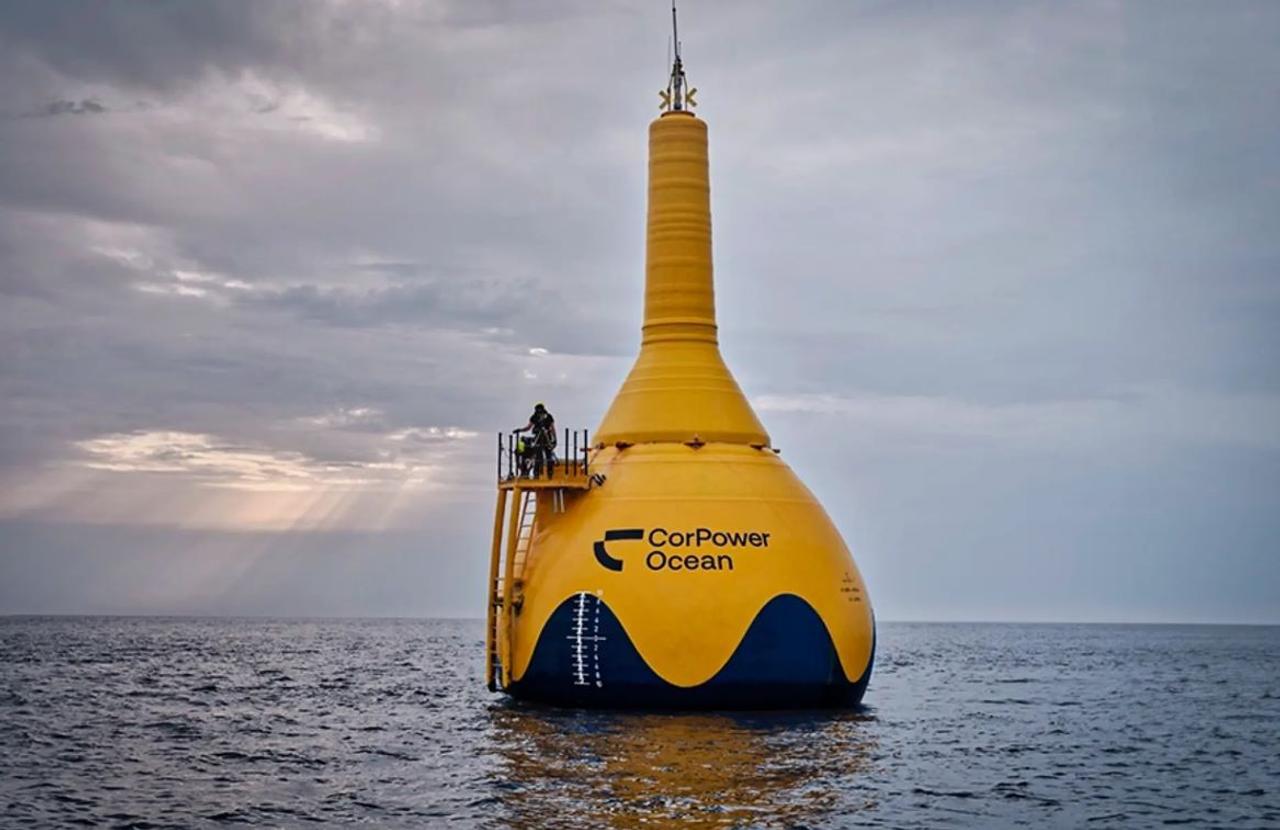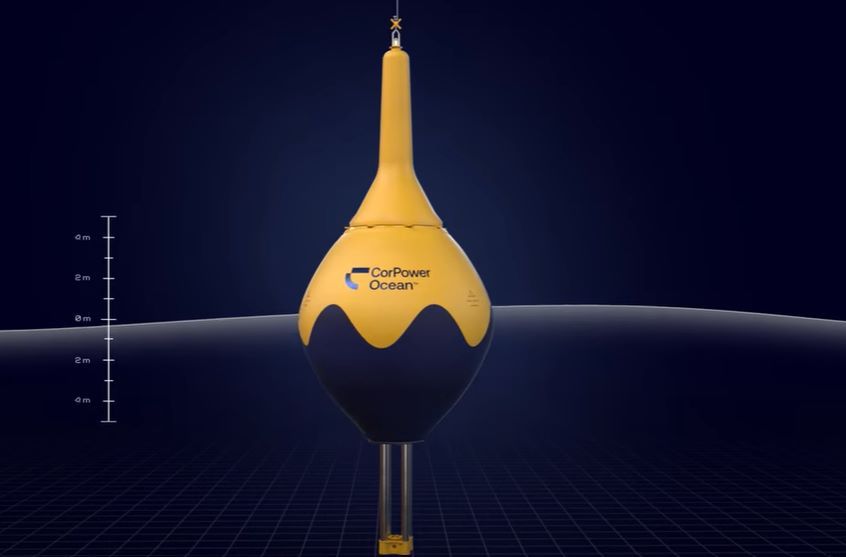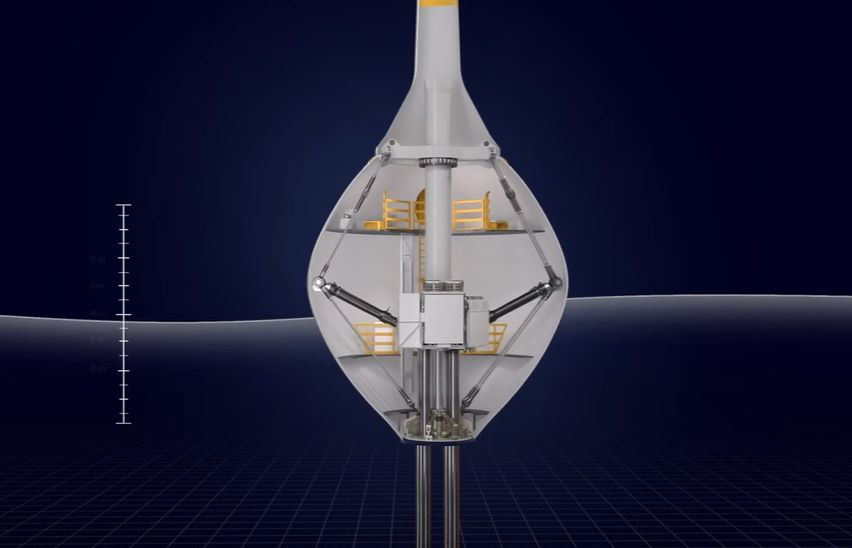
Innovative floating generator C4 triples electricity production from waves: a breakthrough in green energy
Sweden’s CorPower has announced “breakthrough” test results in the Atlantic Ocean of its full-scale floating generators, which cleverly calculate their movements to amplify small waves while protecting themselves from dangerous storm conditions.
In mechanical terms, it is a fairly standard-looking system with an anchored absorber buoy – the waves lift the air-filled chassis up and down, and the power take-off system inside collects energy, converting the linear up-and-down motion for the running generators.

CorPower says it’s a new phase control technology called WaveSpring that sets the huge C4 buoys apart. The internal pneumatic cylinder is preloaded to pull the buoy down, so that in the absence of active control, the buoy simply remains in transparent mode, no matter how high the waves are. This acts as a safety mechanism in the worst conditions.
But when the waves are more stable, the C4 starts to swing up and down twice the amplitude of the waves, adjusting the phase of its movements. That is, the generator does not rise at the same time as the wave, but lags behind to receive a small additional energy impulse that pushes it higher.
This effect is of great importance for power generation, with CorPower claiming a 300% increase in power generation compared to a similar buoy without Wavespring phase control. These buoys are very large – 19 meters in height and 9 meters in diameter.

CorPower delivered the C4 to an open test site in the Atlantic Ocean, Portugal, where it was connected to the grid and exported electricity. The weather put CorPower to the perfect test of survivability, causing monstrous waves of 18.5 meters high. The C4 switched to “transparent” mode and weathered the storm without any problems.
The team recorded a peak power output of about 600 kW, but claims that the device was limited in both speed and range during the tests. When operating at full capacity, the peak output is expected to be around 850 kW.
CorPower predicts a normalized cost of energy (LCoE) in the range of USD 33-44 per megawatt-hour after the 20 gigawatt capacity is deployed. This was a very competitive price, given that wave energy practically works around the clock and seven days a week, and can fill in the gaps when wind and solar power do not work.
The next step, according to the company, will be a site with several buoys, where it will be possible to start testing the concept close to commercial implementation.

